Growing hydroponic tomatoes can be a rewarding and fruitful experience. However, like any form of gardening, it comes with its fair share of challenges. By understanding the common problems that can arise when growing hydroponic tomatoes and knowing how to fix them, you can ensure the health and success of your plants. What are common hydroponic tomato problems? Whether it’s nutrient deficiencies, pests, or diseases, there are ways to address these hydroponic issues effectively.
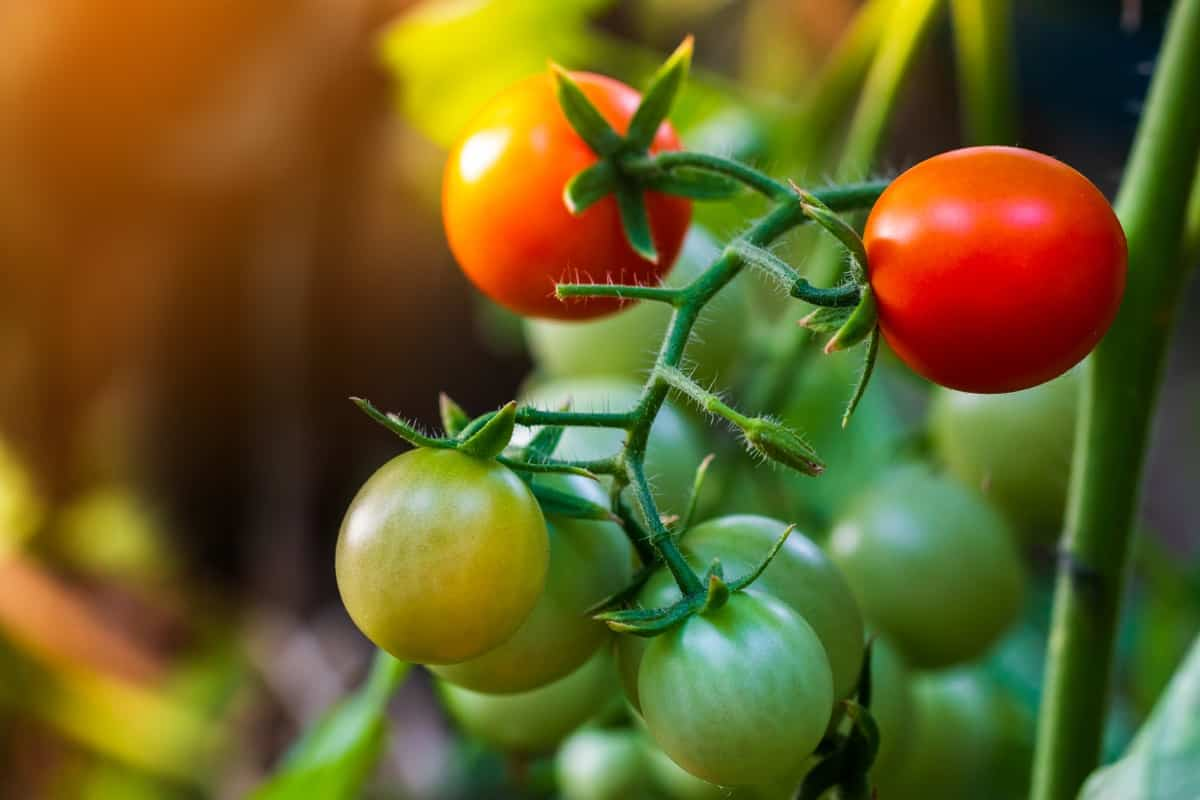
Regularly monitoring your plants’ health is crucial in catching any problems early on so that necessary treatments or adjustments can be made promptly. Remember to maintain proper nutrient levels and pH balance in your hydroponic system for optimal growth. Look for signs of pests or diseases and take immediate action if needed.
Hydroponic Tomato Problems
Nutrient Deficiencies in Hydroponic Tomatoes
Nutrient deficiencies are common in hydroponic tomato cultivation but are manageable with the right knowledge and solutions. One common nutrient deficiency is nitrogen deficiency. This can result in stunted growth and yellowing leaves. You can prevent this by adding the best fertilizer for hydroponic tomatoes and a nitrogen-rich fertilizer or increasing the amount of nitrogen in your nutrient solution.
Another nutrient deficiency to watch out for is potassium deficiency. Symptoms include yellowing leaf margins and weak stems. A potassium supplement or adjusting your nutrient solution to include more potassium can help alleviate this problem. Calcium deficiency is another deficiency in hydroponic tomatoes, leading to blossom end rot – those unsightly brown spots on the bottom of your fruits.
Boosting calcium levels through supplements or adjusting pH levels can help prevent this issue. Magnesium deficiency may cause chlorosis (yellowing) between leaf veins. Adding magnesium sulfate (Epsom salt) to your feeding regimen should resolve this problem. Iron deficiency might manifest as interveinal chlorosis on new leaves while older ones remain green. Chelated iron supplements mixed into the nutrient solution may correct this imbalance.
pH Imbalance in Hydroponic Tomato Systems
One of the common hydroponic tomato problems is pH imbalance in their systems. When the pH level is too high (alkaline), essential nutrients such as iron, manganese, and zinc become less available for plant absorption. This can even cause nutrient deficiencies. On the other hand, if the pH level is too low (acidic), it can cause toxicity issues with certain nutrients like aluminum or copper.
Regular adjustments are necessary to maintain optimal hydroponic tomato pH levels. If your system’s pH is off balance, there are several ways to correct it. One method is through adjusting the nutrient solution itself. Adding acid or alkaline solutions specifically designed for hydroponics can bring the pH back into range.
In case you missed it: How to Grow Tomatoes in Grow Bags: Planting from Seed, Growing, and Care
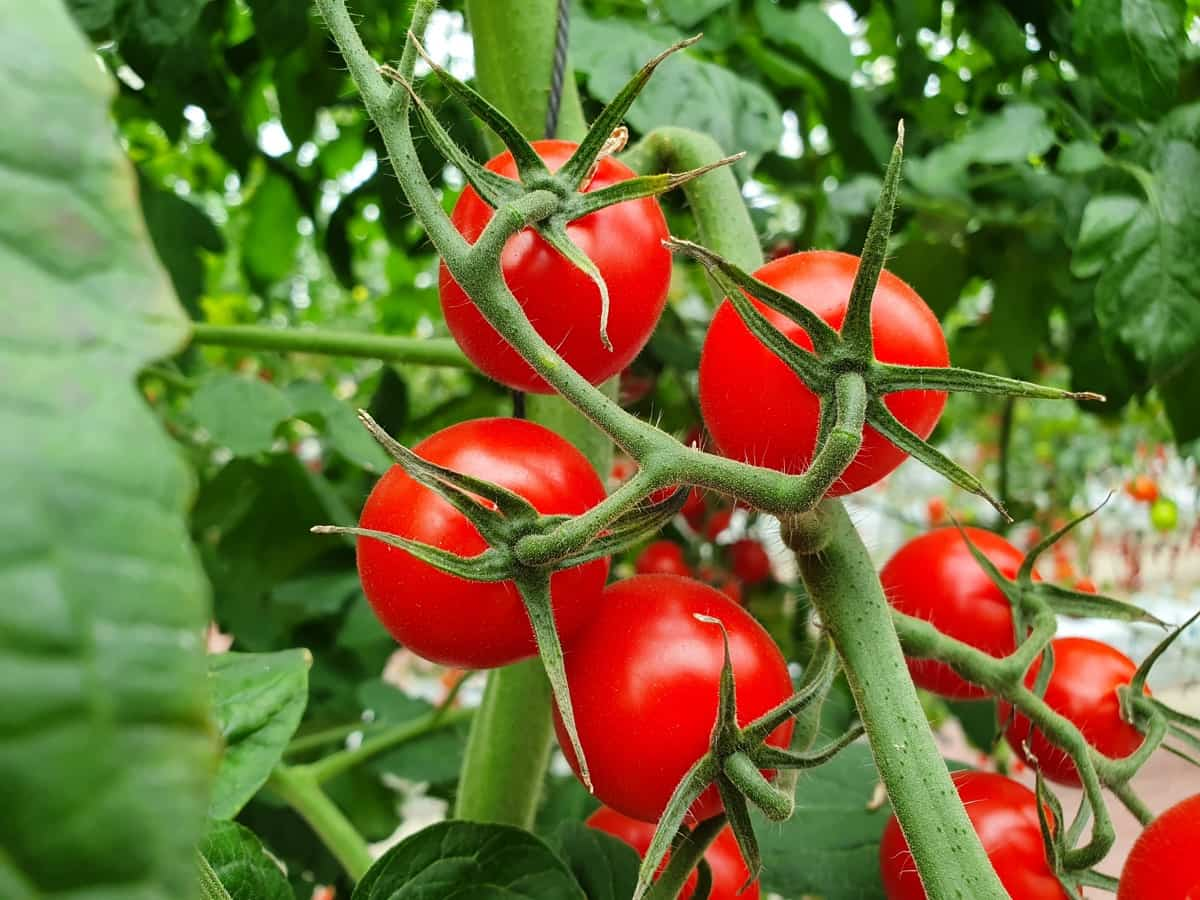
Another approach involves buffering agents like potassium bicarbonate or phosphoric acid to stabilize fluctuations in pH. Additionally, incorporating materials such as limestone or dolomite into your growing medium helps regulate long-term changes in acidity levels. Remember that different stages of plant growth may require slightly different pH ranges.
Diseases in Hydroponic Tomato Plants
Regarding hydroponic tomato cultivation, diseases can be a major setback. Like traditional soil-based systems, hydroponic tomatoes are susceptible to various diseases that hinder their growth and yield potential. One common disease is Fusarium wilt, caused by the fungus. This pathogen attacks the plant’s vascular system, leading to wilting and eventual death. Another culprit is powdery mildew, which manifests as white powdery patches on leaves and stems.
It thrives in humid conditions and can quickly spread throughout your hydroponic setup. Bacterial spot is another hydroponic tomato disease. This disease causes dark spots on leaves and fruit, reducing their quality and market value. Proper sanitation practices are essential to prevent these diseases from wreaking havoc on your hydroponic tomato plants.
Regularly disinfecting your equipment, maintaining clean growing environments, and using disease-resistant cultivars can go a long way in preventing outbreaks. In addition to proactive measures against diseases, monitoring environmental conditions and air circulation within your hydroponic system will help create an unfavorable environment for pathogens to thrive.
Pests in Hydroponic Tomato Systems
One of the challenges faced by hydroponic tomato growers is dealing with pests. These tiny invaders can wreak havoc on your plants if not properly managed. Several common pests can infest hydroponic tomato systems, from aphids to whiteflies. Aphids, those pesky little insects, love to feed on the sap of tomato plants. They multiply quickly and can cause stunted growth and distorted leaves.
Thrips are notorious for damaging tomatoes by feeding on plant tissues and spreading viruses. Mealybugs are equally troublesome as they suck the sap from stems and leaves while secreting honeydew that attracts ants. To combat these pests, it’s important first to identify them accurately.
Once identified, you can choose appropriate control methods, such as introducing beneficial insects like ladybugs or lacewings or using organic insecticides for hydroponic Tomatoes. Regularly monitoring your plants is key; inspecting both upper and lower leaf surfaces for signs of pest activity will help catch problems early before they escalate into full-blown infestations.
Root Rot in Hydroponic Tomato Plants
Root rot is a common problem that hydroponic tomato growers may encounter. Why are my hydroponic tomatoes dying? Root rot fungal disease can devastate the plant’s root system, leading to wilting, stunted growth, and even death. It occurs when the roots are constantly saturated with water, creating an ideal environment for fungi to thrive. The main cause of root rot in hydroponic systems is overwatering. When excess water accumulates in the growing medium or reservoir, it deprives the roots of oxygen and promotes fungal growth.
In case you missed it: 14 Common Problems with Cherry Tomato Plants: Prevention, Treatment, and Solutions
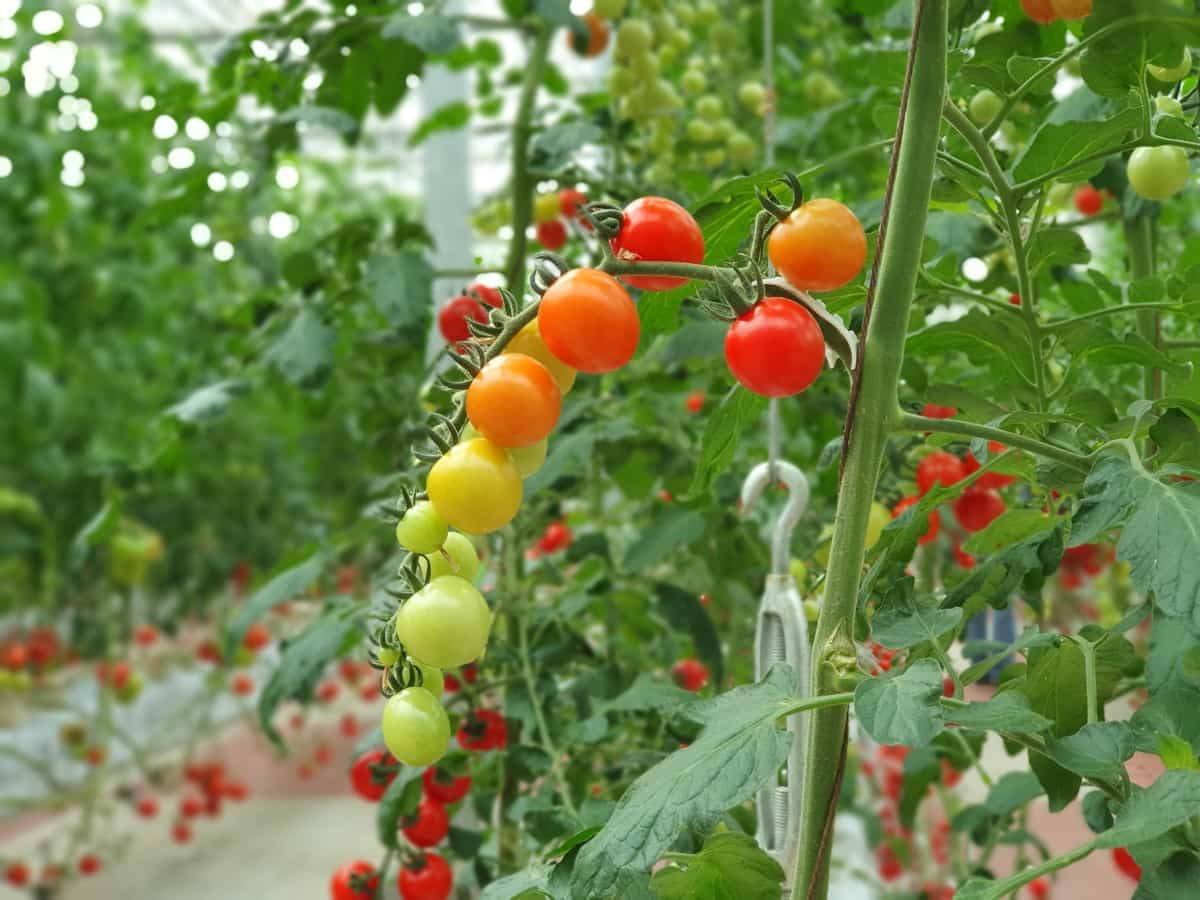
Poor drainage and using contaminated water sources can also contribute to this issue. Preventing root rot starts with ensuring proper drainage in your hydroponic setup. Use well-draining growing mediums like coconut coir or perlite, and regularly check that there are no blockages in your system that could lead to water accumulation. Maintaining a balanced nutrient solution is crucial as well. Overfeeding plants can weaken their immune systems, making them more susceptible to diseases like root rot.
Regularly monitor pH levels and adjust as needed since imbalances can affect nutrient uptake and increase the risk of infection. If you suspect root rot in your hydroponic tomato plants, take immediate action to mitigate its spread. Remove any affected plants from the system promptly to prevent further contamination. Consider implementing preventative measures such as adding beneficial microbes or hydrogen peroxide treatments to combat fungal growth.
Temperature Fluctuations in Hydroponic Tomato Cultivation
Maintaining optimal temperature is crucial for successful hydroponic tomato cultivation. However, temperature fluctuations can pose significant challenges for growers. These fluctuations can occur due to various factors, such as weather changes, faulty equipment, or inadequate insulation. Fluctuations in temperature can have detrimental effects on tomato plants.
When temperatures rise too high, it can lead to wilting, leaf curling, and reduced fruit set. On the other hand, when temperatures drop too low, it can slow down plant growth and affect nutrient uptake. To address temperature fluctuations in hydroponic systems, growers must implement effective strategies. One approach uses climate control systems like heaters or fans to regulate the temperature within an ideal range.
Additionally, insulating the growing area and monitoring external conditions regularly can help mitigate sudden shifts. Another method is implementing a shading system during the hot summer to protect plants from excessive sunlight and heat stress. This helps maintain stable temperatures and prevents leaf scorching and sunburn damage.
Temperature fluctuations are common challenges hydroponic tomato growers face that require careful management. By implementing appropriate measures such as climate control systems, shading techniques, insulation methods, and adequate ventilation, cultivators can create a stable environment for their tomatoes’ growth and development.
In case you missed it: Expert Tips to Grow the Tastiest Tomatoes: DIY Guide

Lighting Issues in Hydroponic Tomato Systems
Lighting is an essential factor in hydroponic tomato cultivation. One common issue with lighting in hydroponic tomato systems is inadequate intensity or duration. Insufficient light can lead to weak, spindly plants struggling to produce healthy yields. On the other hand, excessive light exposure can cause leaf burn and stunted growth.
Another problem that growers may need help with is the proper positioning of lights. Placing lights too close to the plants can result in overheating, while keeping them too far away may not provide sufficient coverage for all parts of the plant. Moreover, selecting the right type of lighting is crucial. Different stages of plant growth require different spectrums and intensities of light.
Full-spectrum LED grow lights, or high-intensity discharge lamps, are popular among hydroponic tomato growers due to their ability to effectively mimic natural sunlight. Furthermore, maintaining consistent lighting schedules is vital for optimal plant growth. Tomatoes typically require 12-16 hours of light per day during vegetative growth and around 8-12 hours during flowering and fruiting stages.
Water Quality Problems in Hydroponic Tomato Cultivation
Poor water quality can lead to various problems that affect the overall health and productivity of the plants. One common water quality issue is high dissolved salts, which can cause nutrient imbalances and hinder the plant’s ability to take up essential minerals. Additionally, if the water in the system contains high chlorine levels, it can damage the roots and inhibit growth. It’s important to use filtered or dechlorinated water to avoid these issues. If the pH of the water is too high or too low, it can impact nutrient availability and uptake by the plants.
Regular monitoring and adjusting pH levels are necessary to maintain optimal conditions for tomato growth. Furthermore, contaminated water sources can introduce pathogens into the system, leading to diseases such as bacterial wilt or fungal infections. Using clean and sterile water sources is crucial in preventing such problems. Inadequate oxygenation in stagnant or poorly circulated water can result in root rot due to a lack of oxygen supply to the roots.
In case you missed it: How to Control Pests and Diseases in Tomato Crop: Causes, Symptoms, Chemical, and Biological Management
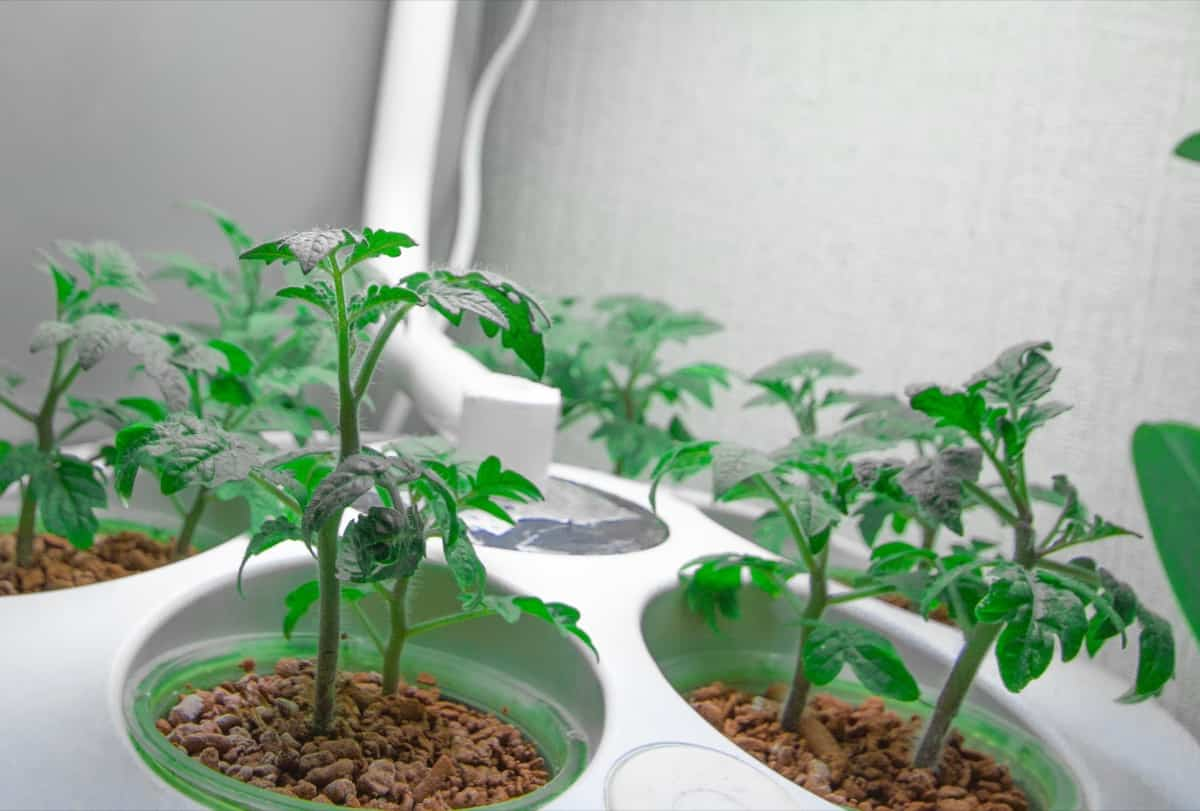
Stress Factors in Hydroponic Tomato Plants
Growing hydroponic tomatoes may seem stress-free, but these plants can still experience their fair share of stress factors. These factors can range from environmental conditions to nutrient imbalances, significantly impacting your tomato plants’ overall health and productivity. One common stress factor is temperature fluctuations. Tomatoes thrive in specific temperatures, and sudden changes can cause stress.
High temperatures can lead to wilting and reduced fruit set, while low temperatures can slow growth and development. Another potential stressor is lighting issues. Tomatoes require proper levels of light for photosynthesis to occur effectively. If there are deficiencies or excesses in lighting intensity or duration, it can impede plant growth and yield.
Water quality problems also pose a risk to hydroponic tomato plants. Poor water quality with high levels of contaminants or improper pH levels can hinder nutrient uptake and overall plant health. In addition to external factors, internal stresses such as nutritional deficiencies or imbalances play a role too. Insufficient nutrients like nitrogen, phosphorus, or potassium can result in stunted growth and reduced fruit production.
Pollination Issues in Hydroponic Tomato Cultivation
Pollination is a crucial process in the cultivation of hydroponic tomatoes. It involves transferring pollen from the male to the female flower, eventually forming fruit. However, in a controlled environment like hydroponics, there can be some challenges regarding pollination. One common issue is the need for pollinators, such as bees and other insects responsible for naturally transferring pollen.
Since hydroponic systems are typically indoors or enclosed, they may need access to these natural pollinators. As a result, tomato plants may need better fruit sets or fruit at all. To overcome this problem, growers can manually pollinate their tomato plants using a small brush or gently shaking the flowers to release the pollen. This method mimics the action of bees and helps ensure proper fertilization.
Another option is introducing artificial pollinators, such as bumblebees, into the hydroponic system. These specially bred-bees can effectively pollinate even in an enclosed environment. It’s important to note that timing is crucial for Tomato pollination in hydroponics. Tomatoes have both male and female flowers but don’t bloom simultaneously. Growers need to closely monitor their plants and identify when both types of flowers are open for successful hand pollination.
Hydroponic Tomato Leaf Problems
When it comes to growing tomatoes hydroponically, leaf problems can be a common issue that growers face. These leaf problems can manifest in various ways, indicating underlying issues within the system. Identifying and addressing these problems promptly is crucial for maintaining healthy tomato plants and maximizing yields. One common problem is yellowing leaves on Tomato plants, which nutrient deficiencies or imbalances can cause.
In case you missed it: Why are my Tomatoes Rotting on the Bottom and Top: Blossom End Rot, Symptoms, Remedies, and Solutions
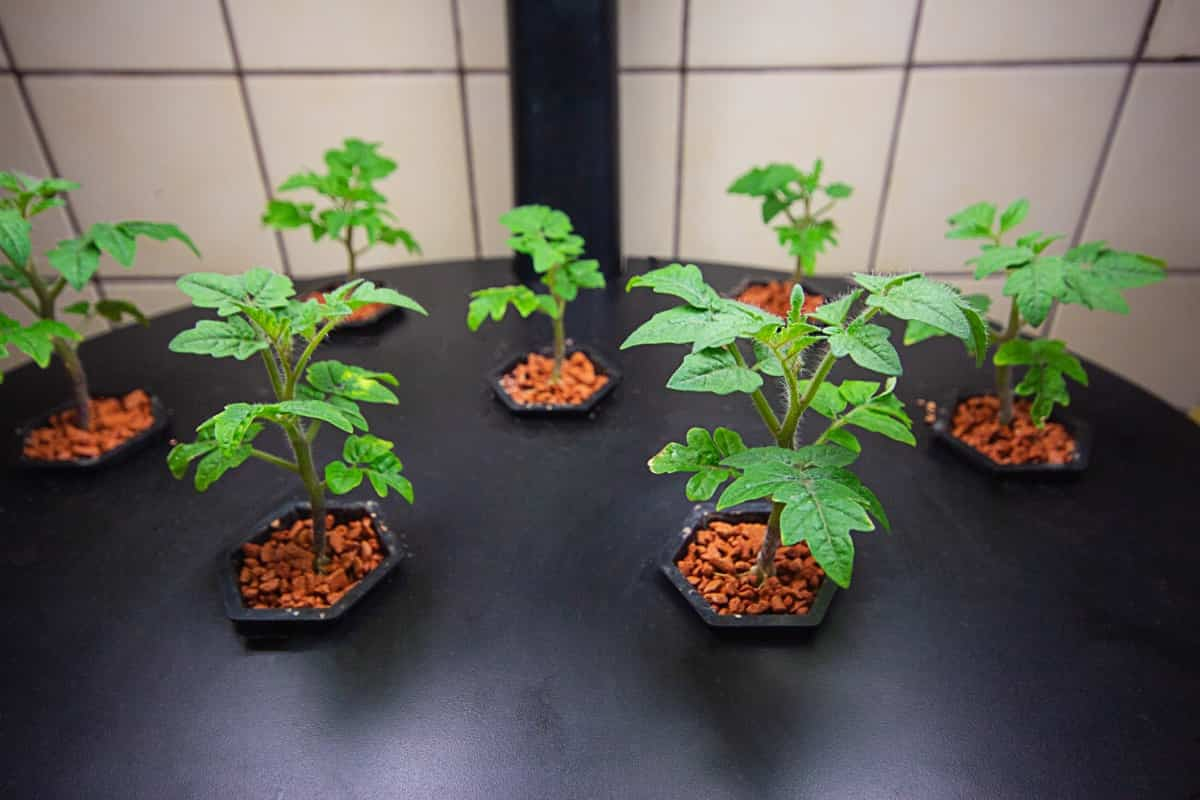
For example, nitrogen deficiency may result in pale yellow leaves, while iron deficiency can lead to interveinal chlorosis (yellowing between veins). On the other hand, excessive nutrients like potassium or magnesium can cause dark green foliage with burnt edges. Another issue that hydroponic tomato growers may encounter is wilting or drooping leaves. This could indicate overwatering or underwatering of the plants. The right watering frequency and duration balance are essential for plant needs and environmental conditions.
Leaf curling is another frequently observed problem in hydroponic tomato plants. This condition could stem from high temperatures exceeding optimal ranges or pest infestations such as aphids or whiteflies. Inadequate ventilation within the grow space might also contribute to leaf curling. Brown spots on tomato leaves often indicate fungal diseases like early blight or septoria leaf spot. It can spread rapidly if not addressed promptly through proper sanitation measures and fungicide treatments.
Conclusion
Growing tomatoes hydroponically can be a rewarding experience, but it’s challenging. Why are my hydroponic tomatoes not producing? Like any other cultivation method, hydroponic tomatoes are prone to problems like not producing fruits, brown spots on leaves, etc., affecting their growth and productivity.
Understanding these common issues is crucial for successful tomato cultivation in a hydroponic system. With patience, dedication, and a little troubleshooting, you will soon reap the rewards of healthy hydroponically grown tomatoes bursting with flavor.
- Broccoli Seed Germination and Selection
- Asparagus Seed Germination and Variety Selection
- Seasonal Flower Gardening: Best Practices for Spring, Summer, Fall, and Winter
- How to Grow Hibiscus from Flower
- Plantation Ideas for Home Decoration: A Beginners Guide
- Flower Garden Designs and Layouts for Beginners
- Planting and Spacing Techniques in Papaya: A Beginner’s Guide
- Growing Gold: Essential Techniques for Planting Pineapples
- How to Make Kalanchoe Plant Bushy: Home Remedies and Solutions
- 11 Reasons Why Your Gardenia is Not Blooming: Home Remedies and Solutions
- Eco Elegance: The Guide to Designing a Drought-Tolerant Landscape
- Gardening on a Slope: Strategies for Hillside Landscaping
- Nourish and Flourish: Top Organic Mulches for Thriving House Plants
- Everything You Want to Know about Indian Mogra Flower: Discover Uses and Growing
- Green Thumb Success: Expert Tips for Cultivating Greenhouse Pumpkins All Year Round
- Maximize Growth & Flavor: The Ultimate Guide to Companion Planting in Herb Gardens
- How to Control Rhododendron Problems Naturally: Home Remedies and Organic Ways to Fix Them
- Natural Magic: The Remarkable Benefits of Cinnamon for Plants
- Best Steps to Revive Dying Tulip with Natural and Organic Treatment
- 10 Reasons Why Your Angel Trumpet is Not Blooming: Remedies and Treatment
- How to Fix Periwinkle Leaf and Flower-Related Problems: Natural Remedies and Solutions
- How to Fix Zinnias Leaf and Flower Problems: Discover Natural and Home Remedies
- Organic Steps to Induce Lemon Tree Flowers: A Comprehensive Guide
- Bloom Booster: Crafting the Perfect Homemade Bougainvillea Fertilizer
- Optimizing Growth: A Guide to Applying NPK Fertilizer for Potted Plants
- 10 Best Homemade Fertilizers for Rubber Plant: DIY Recipes and Application Method
- How to Boost Female Pumpkin Flowers: Effective Steps for More Flowers and High Yields
- Transform Your Indoor Garden: Top Benefits of Pink Salt for Houseplants
- 10 Best Homemade Fertilizers for Peacock Plants (Calathea): Easy DIY Guide
- Unlock Blooms: 9 Reasons Why Your Potted Chrysanthemum is Not Blooming
- 8 Reasons Why Your Potted Hibiscus is Not Blooming: Fix it with Simple Solutions
- Unlock Blooms: 9 Key Reasons Your Potted Frangipani Won’t Flower
- 10 Reasons Why Is My Ice Plant Not Blooming: Remedies and Treatment
- 10 Reasons Why My Potted Hydrangea Not Blooming: Treatment and Remedies
- 10 Reasons Why is My Wisteria Not Blooming: Remedies and Treatment
- 10 Reasons Why is My Goldfish Plant Not Blooming: Remedies and Treatment